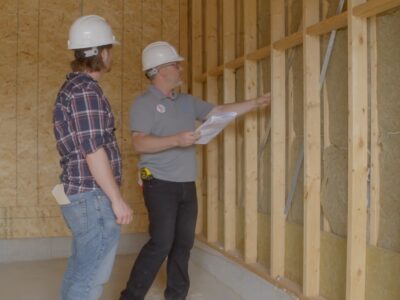
Building Permit Fees and the “Loss Leader”
Orginally published in the OBOA June 2025 Journal
Building permit fees in Ontario are subject to the requirements of the Ontario Building Code Act Section 7(2). This section stipulates that a municipality must not collect fees exceeding the anticipated reasonable costs to administer and enforce the Building Code within its area of jurisdiction.
Understanding the Fee Strategy
In general, most municipalities agree that it does not mean each specific permit must not exceed its anticipated costs, but rather that the overall collection of building permit fees should not exceed these costs. Many municipalities adopt a strategy of sharing fees from one project to fund others. For instance, reducing building permit fees for small residential projects, such as decks, makes it more enticing for community members to participate in the legal building permit process. However, this approach may lead to increased costs for other projects to recover the actual costs of the building department's work. This raises an ethical question: Is it morally correct for commercial and large residential projects to subsidize smaller ones?
The "Loss Leader" Strategy
The concept of a “loss leader” is a pricing strategy where a product is sold below its market cost, or even below the cost of production, to attract customers and encourage them to purchase other, more profitable items. In the context of building permit fees, the goal is not to sell more profitable items but to encourage the purchase of the original item itself. The benefit is the enhanced safety of the community, with the costs being subsidized by other customers. Most municipalities agree that the benefits of this strategy outweigh its cons, but it is essential for the public and council to understand the actual costs and funding sources.

Cost Analysis of Building Permits
Analyzing the cost for a building department to cover the anticipated costs for a deck reveals that most municipalities in Ontario are not collecting enough. Depending on the service level or quality of the building permit application and construction, it is not unusual for nine hours to be spent on each project. Including plan review, administration, zoning, grading and inspections, the hours can easily meet and exceed this time. It is also critical to ensure enough time is allocated for any enhanced enforcement needs. Adding direct department costs, such as software, overheads and vehicles, can bring these costs to over $600. Indirect costs from other municipal departments also need to be considered, often adding 80% to 100% to the direct costs, resulting in a total of around $1,200.
Funding the Deficit
A quick online search shows building permit fees for a deck range from $100 to $700 across municipalities. Even with the highest permit fee, there is a deficit of $500 per permit. The question arises: Where will this revenue come from?
There are two primary sources to offset this deficit: (1) larger projects, which would increase their fees, or (2) funding from the tax base. Most councils follow a strategic plan that emphasizes fairness and equity, leaving the decision to them.
Cross-Subsidization Strategy
Using other projects to offset deficiencies typically lowers the building permit fee for smaller projects. Most councils accept this approach, and there are generally no public objections. However, some municipalities may review only neighbouring or similarly sized departments, which can be flawed as each community may have a different level of service or strategy regarding cross-subsidizing small projects.
Conclusion
The “loss leader” approach in building permits simplifies compliance with building permits for decks. However, it is crucial to understand where the money comes from to ensure compliance on these projects. Where do you think the funding should come from?
Not sure if your current permit fees reflect the true cost of service?
At RSM, we’ve conducted comprehensive building permit fee reviews for municipalities across Ontario. With hands-on experience running building departments and deep financial analysis, we help councils understand where subsidies exist, where gaps are forming, and how to build a fair, transparent fee structure.


